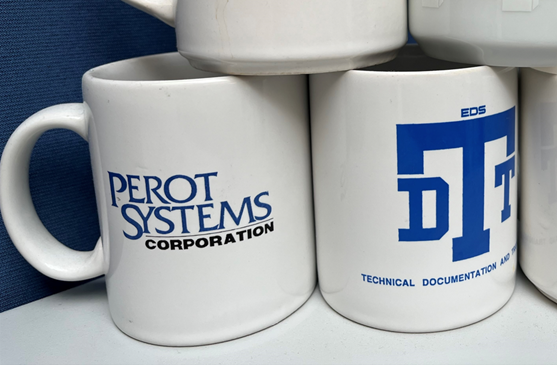It’s late May in Springfield, Illinois, which means the end of the school year and the beginning of summer break. As a parent of older teenagers, I get to witness firsthand their shift from school mode into work mode. It’s an exciting time of year for them, and a fond memory for me… it seems like just yesterday I was in their shoes.
That’s especially true of my middle son’s experience, who is leaving his college campus behind and heading off to his first corporate internship. Year after year, I see new LRS summer interns arrive, and remember fondly my own summer internships with two IT organizations founded by a true pioneer of information technology: H. Ross Perot.

Ross Perot was many things, but aside from his brief venture into politics, he is probably most famous for establishing the IT giants Electronic Data Systems (EDS) in 1962 and his eponymous Perot Systems in 1988. Both changed the computing world in profound ways, as I learned during my internships at these organizations. Some would argue that Mr. Perot was the genius behind the Cloud computing model.
According to Wikipedia:
Cloud computing is the on-demand availability of computer system resources, especially data storage (cloud storage) and computing power, without direct active management by the user. Large clouds often have functions distributed over multiple locations, each of which is a data center. Cloud computing relies on sharing of resources to achieve coherence and typically uses a pay-as-you-go model, which can help in reducing capital expenses but may also lead to unexpected operating expenses for users.
What does that have to do with Ross Perot and his early businesses? Everything. Perot was initially a salesman for IBM, pitching mainframe computers to large organizations. He was very successful at this but realized that a lot of potential customers could not justify the up-front capital costs to purchase, operate, and maintain a huge liquid-cooled computing behemoth.
Remember, mainframe computers at that time required dedicated climate-controlled rooms, typically with raised floors, expensive tape storage, miles of thick cables, etc. Not to mention the highly-skilled programmers and operators to keep it all running. Perot knew that most of his customers’ data centers sat unused at night and on weekends. While those huge organizations looked at this unused computing power as the “cost of doing business,” Perot saw it as wasted potential.
His idea: rent computing time from these large organizations during the off-hours and sell computing time to those organizations who could not afford data centers of their own. Meanwhile, he could provide his own teams of IT professionals to do the work on behalf of the outsourcing customers. His proposal gave mainframe owners a way to defray their hardware expenses, gave smaller companies a way to get in the computing game at a lower entry cost, and his own company a steady stream of billable service hours. A Texas-sized Win-Win-Win proposition.
He initially pitched the idea to IBM management, which did not see the potential. So he quit his job at IBM, founded EDS, and proved to the world the viability of this business model. When companies realized they could get the milk without buying the cow – or more precisely, get the computing power without buying the hardware, personnel, etc. – they jumped at the chance.
Today, Cloud computing is taking the benefits of this approach to the next level. Computing power and data storage can be thought of almost as a utility; buy as much as you need, when and where you need it, and pay much less during periods of lower demand. Companies of all sizes have embraced this flexibility and the benefits thereof. However, there is one element of computing that does not fit as easily into this model: output management. Printers are electromechanical devices that put toner on paper. Scanners are electromechanical devices that turn images of hardcopy pages into data. Both require hardware at the point of document use.
Luckily, LRS offers a way to marry the best elements of Cloud computing with the flexibility and reliability of the LRS output management suite. Our LRS Managed Services solution (highlighted in our recent “Fresh Perspectives” series of this Blog), provides you a steady supply of milk while our staff tends to the cows – a benefit tempting to even some of the world’s largest global corporations. For organizations that want more hands-on control of their print environments but still want to leverage Cloud capabilities, stay tuned for an upcoming announcement on this Blog. Once again, LRS has you covered.